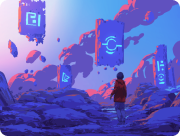--- Auto-Generated Description ---
This diagram models a game system where players navigate through levels, collect dots, fruits, and power-ups to gain points and survive threats. At the start, pools such as "Super Dots," "Ghost House," "Dots," and "Live" are set with initial resources, representing elements like power-ups, challenges, available points, and the player's lives, respectively. Converters like "Eat Super Dot," "Eat Dot," and "Eat Fruits" simulate the player consuming these items, converting them into points or other advantages, while "Eat Ghost" represents a scenario where players can temporarily defeat enemies. The pools interact with each other and drains through a series of resource and state connections that dictate the flow of resources based on player actions and game mechanics.
The diagram features dynamic elements such as sources that can generate new challenges or replenish items, and gates like "Evade" and "Reset" which represent player actions like dodging threats or resetting elements of the game when certain conditions are met. Drains represent elements where resources can be lost, for example, through missed opportunities or enemy actions. State connections modify the behavior of other elements based on the game's evolving conditions, such as increasing difficulty or triggering events when certain thresholds are reached. End conditions like "Level Complete" signal the achievement of objectives that allow progression or end the game based on resource states such as the depletion of lives or completion of objectives. This system is designed to simulate a fully interactive game environment where player actions and game events continuously impact the game's state and progression.
